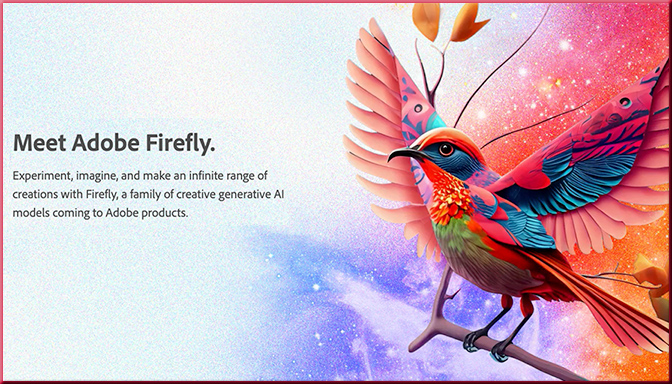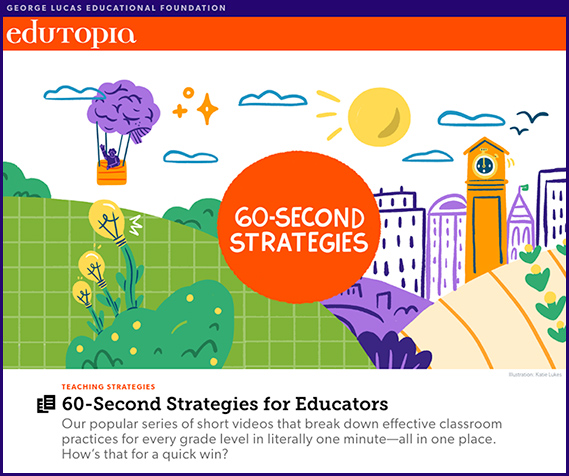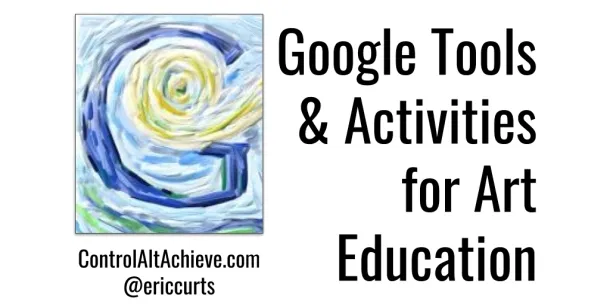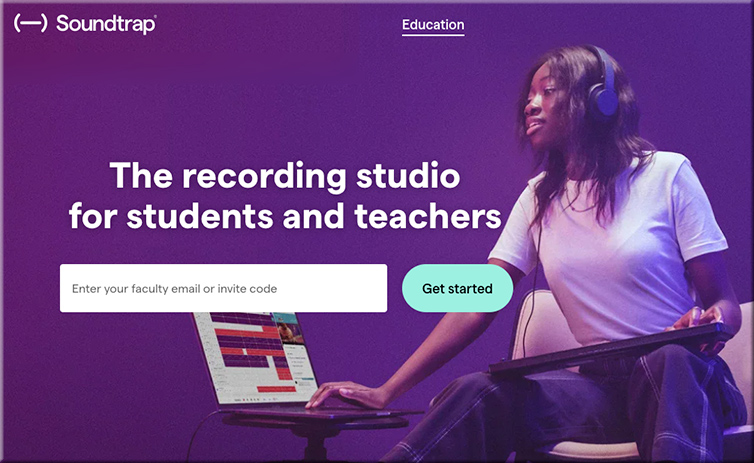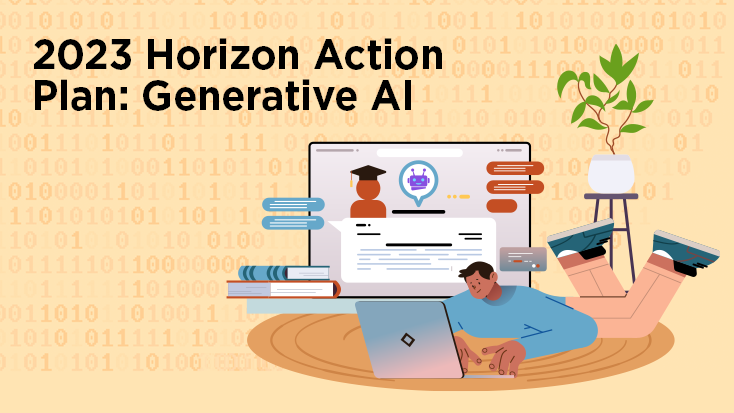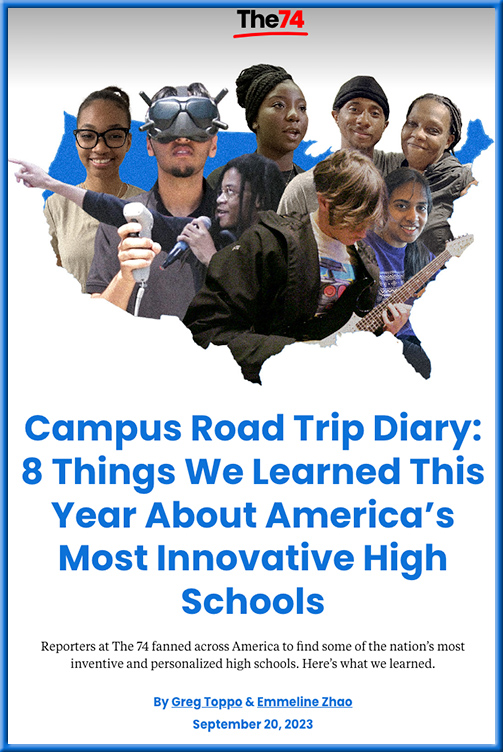From DSC:
Interesting fodder for thought, for sure. Thanks Stefan.
How Have Schools Improved Since the Pandemic? What Teachers Had to Say — from the74million.org by Cory Beets
Educator’s view: In technology, mental health, and nurturing and solutions-oriented environments, COVID provided lessons schools have taken to heart.
In doing research for my Ph.D. program, I sought out the perspectives of five teachers through informal conversations about how schools have improved since the pandemic. Four themes emerged.
From DSC:
To add another positive to the COVID-19 picture…
Just like COVID-19 did more for the advancement of online learning within our learning ecosystems than 20+ years of online learning development, COVID-19 may have done more to move our younger learners along the flexibility route that will serve them well in their futures. That is, with today’s exponential pace of change, we all need to be more agile and flexible — and be able to reinvent ourselves along the way. The type of learning that our K-12ers went through during COVID-19 may have been the most helpful thing yet for their future success and career development. They will need to pivot, adapt, and take right turn after right turn.
180 Degree Turn: NYC District Goes From Banning ChatGPT to Exploring AI’s Potential — from edweek.org by Alyson Klein (behind paywall)
New York City Public Schools will launch an Artificial Intelligence Policy Lab to guide the nation’s largest school district’s approach to this rapidly evolving technology.
The Leader’s Blindspot: How to Prepare for the Real Future — from preview.mailerlite.io by the AIEducator
The Commonly Held Belief: AI Will Automate Only Boring, Repetitive Tasks First
The Days of Task-Based Views on AI Are Numbered
The winds of change are sweeping across the educational landscape (emphasis DSC):
- Multifaceted AI: AI technologies are not one-trick ponies; they are evolving into complex systems that can handle a variety of tasks.
- Rising Expectations: As technology becomes integral to our lives, the expectations for personalised, efficient education are soaring.
- Skill Transformation: Future job markets will demand a different skill set, one that is symbiotic with AI capabilities.
Teaching: How to help students better understand generative AI — from chronicle.com by Beth McMurtrie
Beth describes ways professors have used ChatGPT to bolster critical thinking in writing-intensive courses
Kevin McCullen, an associate professor of computer science at the State University of New York at Plattsburgh, teaches a freshman seminar about AI and robotics. As part of the course, students read Machines of Loving Grace: The Quest for Common Ground Between Humans and Robots, by John Markoff. McCullen had the students work in groups to outline and summarize the first three chapters. Then he showed them what ChatGPT had produced in an outline.
“Their version and ChatGPT’s version seemed to be from two different books,” McCullen wrote. “ChatGPT’s version was essentially a ‘laundry list’ of events. Their version was narratives of what they found interesting. The students had focused on what the story was telling them, while ChatGPT focused on who did what in what year.” The chatbot also introduced false information, such as wrong chapter names.
The students, he wrote, found the writing “soulless.”
7 Questions with Dr. Cristi Ford, VP of Academic Affairs at D2L — from campustechnology.com by Rhea Kelly
In the Wild West of generative AI, educators and institutions are working out how best to use the technology for learning. How can institutions define AI guidelines that allow for experimentation while providing students with consistent guidance on appropriate use of AI tools?
To find out, we spoke with Dr. Cristi Ford, vice president of academic affairs at D2L. With more than two decades of educational experience in nonprofit, higher education, and K-12 institutions, Ford works with D2L’s institutional partners to elevate best practices in teaching, learning, and student support. Here, she shares her advice on setting and communicating AI policies that are consistent and future-ready.
AI Platform Built by Teachers, for Teachers, Class Companion Raises $4 Million to Tap Into the Power of Practice — from prweb.com
“If we want to use AI to improve education, we need more teachers at the table,” said Avery Pan, Class Companion co-founder and CEO. “Class Companion is designed by teachers, for teachers, to harness the most sophisticated AI and improve their classroom experience. Developing technologies specifically for teachers is imperative to supporting our next generation of students and education system.”
7 Questions on Generative AI in Learning Design — from campustechnology.com by Rhea Kelly
Open LMS Adoption and Education Specialist Michael Vaughn on the challenges and possibilities of using artificial intelligence to move teaching and learning forward.
The potential for artificial intelligence tools to speed up course design could be an attractive prospect for overworked faculty and spread-thin instructional designers. Generative AI can shine, for example, in tasks such as reworking assessment question sets, writing course outlines and learning objectives, and generating subtitles for audio and video clips. The key, says Michael Vaughn, adoption and education specialist at learning platform Open LMS, is treating AI like an intern who can be guided and molded along the way, and whose work is then vetted by a human expert.
We spoke with Vaughn about how best to utilize generative AI in learning design, ethical issues to consider, and how to formulate an institution-wide policy that can guide AI use today and in the future.
10 Ways Technology Leaders Can Step Up and Into the Generative AI Discussion in Higher Ed — from er.educause.edu by Lance Eaton and Stan Waddell
- Offer Short Primers on Generative AI
- Explain How to Get Started
- Suggest Best Practices for Engaging with Generative AI
- Give Recommendations for Different Groups
- Recommend Tools
- Explain the Closed vs. Open-Source Divide
- Avoid Pitfalls
- Conduct Workshops and Events
- Spot the Fake
- Provide Proper Guidance on the Limitations of AI Detectors
ChatGPT meets Pixar’s 22 Rules of Storytelling.
How to turn ChatGPT into the ultimate storyteller (I shouldn’t be giving this prompt away for free): pic.twitter.com/hFt3QTHd9o
— The AI Solopreneur (@aisolopreneur) October 4, 2023
Canva’s new AI tools automate boring, labor-intensive design tasks — from theverge.com by Jess Weatherbed
Magic Studio features like Magic Switch automatically convert your designs into blogs, social media posts, emails, and more to save time on manually editing documents.
Canva launches Magic Studio, partners with Runway ML for video — from bensbites.beehiiv.com by Ben Tossell
Here are the highlights of launched features under the new Magic Studio:
- Magic Design – Turn ideas into designs instantly with AI-generated templates.
- Magic Switch – Transform content into different formats and languages with one click.
- Magic Grab – Make images editable like Canva templates for easy editing.
- Magic Expand – Use AI to expand images beyond the original frame.
- Magic Morph – Transform text and shapes with creative effects and prompts.
- Magic Edit – Make complex image edits using simple text prompts.
- Magic Media – Generate professional photos, videos and artworks from text prompts.
- Magic Animate – Add animated transitions and motion to designs instantly.
- Magic Write – Generate draft text and summaries powered by AI.
Addendums on 10/11/23:
We released a new model ?
!!! Firefly Image 2 !!!!
As a scientist I am in disbelief that such model is possible with a small dataset as we had.
We compensated artists for training it.
We worked very hard on it. Please, enjoy! #AdobeMax https://t.co/j2TUiiyjN7 pic.twitter.com/gqABThSBWZ
— Kris Kashtanova (@icreatelife) October 10, 2023
Adobe Releases New AI Models Aimed at Improved Graphic Design — from bloomberg.com
New version of Firefly is bigger than initial tool, Adobe says Illustrator, Express programs each get own generative tools
A few hours ago, Adobe released Firefly 2, their new AI image generator.
But how good is it?
I compared it to Midjourney & DALL-E 3 across 10 very different image categories so you don’t have to.
Here are the results:
— Chase Lean (@chaseleantj) October 11, 2023
As AI Chatbots Rise, More Educators Look to Oral Exams — With High-Tech Twist — from edsurge.com by Jeffrey R. Young
To use Sherpa, an instructor first uploads the reading they’ve assigned, or they can have the student upload a paper they’ve written. Then the tool asks a series of questions about the text (either questions input by the instructor or generated by the AI) to test the student’s grasp of key concepts. The software gives the instructor the choice of whether they want the tool to record audio and video of the conversation, or just audio.
The tool then uses AI to transcribe the audio from each student’s recording and flags areas where the student answer seemed off point. Teachers can review the recording or transcript of the conversation and look at what Sherpa flagged as trouble to evaluate the student’s response.
Shift to Self-assessment — from catlintucker.com by Dr. Catlin Tucker
Who decided that grading and assessment should be the exclusive responsibility of teachers? Why do we sideline students when it comes to assessment?
Self-assessment is a powerful strategy that encourages students to become more invested in their learning journeys. It is a process where students evaluate their work, reflecting on what they’ve learned, how well they’ve understood complex concepts, how much progress they’ve made toward mastering key skills, and where they may need to invest time and energy to improve their concept knowledge and skill set (Siegesmund, 2016). Self-assessment shifts the focus from a grade-centric perspective to a learning-centric one. For those of us who want to encourage students to adopt a growth mindset, believing they can always improve and develop with practice and hard work, self-assessment is a critical piece of that puzzle (Wang, Zepeda, Qin, Del Toro & Binning, 2021).
.
8 Fall Activities for Kids With a Digital Spin — from classtechtips.com
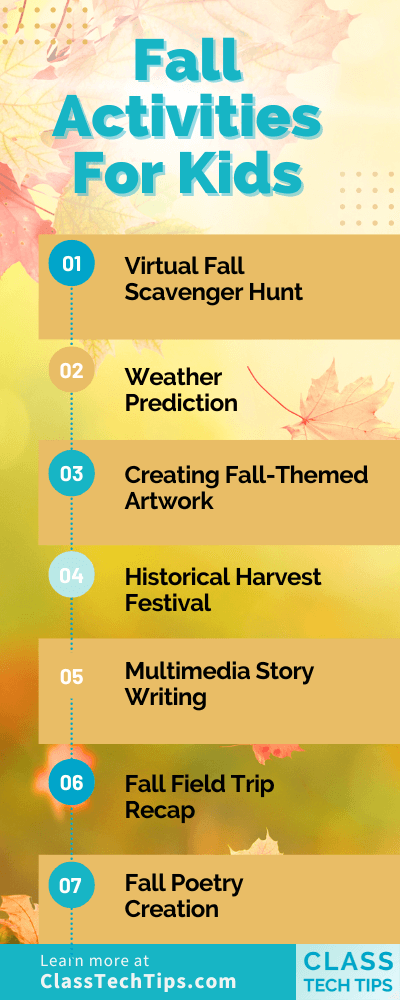
Redefining What High School Is Supposed to Look Like — from edutopia.org by Brittany R. Collins
From restorative grading to paid internships, an equity-centered approach to education creates rich learning opportunities for all students.
We have a networking party with special tables and food, and the students have to stand and mingle. We emulate this sort of a networking party, because they have to learn how to do it. They have to dress the part that day, and I film it so we can watch it back to give them some feedback.
Digital Promise Launches FutureLab to Investigate Transformative Approaches to Teaching and Learning — from digitalpromise.org
Digital Promise announced [on 9/26/23] the launch of the Digital Promise FutureLab. This cutting-edge initiative embodies Digital Promise’s long-standing dedication to innovation in education and aims to not only revolutionize the current state of education, but to reimagine a new world of learning.
FutureLab is funded in part by Digital Promise’s recent gift from MacKenzie Scott.
“Innovation is in Digital Promise’s DNA, and we are reaffirming our commitment to push the boundaries of what’s possible in education,” said Jean-Claude Brizard, President and CEO of Digital Promise. “We believe the Digital Promise FutureLab will be a catalyst for transformative change in education. It’s a significant opportunity to collaborate with visionary educators, technologists, and researchers to create a more equitable future for learners worldwide.”
Google Tools and Activities for Art Education — from techlearning.com by Eric Curts
.
Although there is no replacement for getting your hands dirty with finger paints, technology can offer many ways for students to be creative when making art. In addition to creativity, technology can also allow students to explore and learn about art in new and engaging ways.
Some of the best free digital art tools are those from Google that help educators and students with teaching, learning, exploring, and creating art. The wide range of tools and activities available provide nearly infinite possibilities.
Also relevant/see:
- Top Free Sites for Creating Digital Art — from techlearning.com by Diana Restifo
And speaking of tools, also see:
- Soundtrap: How To Use it to Teach — from techlearning.com by Luke Edwards
Soundtrap is the recording studio for students and teachers that could help in class and beyond
Soundtrap is a music production tool that is designed for use in education. That means a full-on mixing and sound production studio experience, but one that is accessible for students grade six and up.
Since this is relatively simple to use and is available in app as well as web formats, it is highly accessible for both in-class and personal devices.
This tool offers a way to spark creativity in students and a method to help experiment with music that can inspire those new to this world, or enable more experienced students to create complex and explorative music.
Also relevant/see:
BREAKING: YouTube announced a suite of AI tools for creators! From a dedicated video editing app and AI language dubbing to AI video generation and ideation. Here’s the TL;DR:
1. AI Video with Dream Screen – Visually transport yourself anywhere by typing a prompt. This new… pic.twitter.com/fCPSc87IKq
— Bilawal Sidhu (@bilawalsidhu) September 21, 2023
15+ YouTube Shorts Ideas For Your Next Video — from buffer.com by Tamilore Oladipo
If you’re looking for inspiration for your next short video, here are 18 YouTube Shorts ideas to help your content stand out and engage viewers in bite-sized bursts.
With more than 50 billion daily views, YouTube Shorts offers a unique opportunity for content creators to reach a wider audience, promote longer videos, and even increase subscribers.
For content creators and small businesses, Shorts can be a game-changer. Whether you’re repurposing old content, sharing clips from live streams, promoting exclusive content, or hopping on the latest trend, Shorts provide a versatile medium to engage viewers and potentially go viral.
From DSC:
Perhaps there are a few ideas in here for your students — as they continue to develop their skills in creating multimedia-based communications and presentations.
Also relevant/see:
11 YouTube Shorts Creators to Inspire Your Next Viral Video — from buffer.com by Kirsti Lang
A curated list of YouTube Shorts creators worth watching — both at the top of their game and on the rise — and how their content helps them stand out.
Short-form video is still thoroughly enjoying its heyday, due in no small part to YouTube Shorts.
The introduction of vertical, short-form videos to YouTube was a bold move for the Google-owned platform, and it’s paying off for both them and creators — 50 billion daily views is really nothing to be sneezed at.
It’s also ushered in a new wave of short-form video stars, many of whom are prioritizing Shorts over the likes of Facebook and Instagram Reels, and TikTok, with subscriber counts quickly dwarfing what it took years to amass on other platforms.
Evidence Is Mounting That Calculus Should Be Changed. Will Instructors Heed It? — from edsurge.com by Daniel Mollenkamp
Calculus is a critical on-ramp to careers in science, technology, engineering and mathematics (STEM). But getting to those careers means surviving the academic journey.
While there’s been progress of late, it’s been “uneven” and Black, Hispanic and women workers are still underrepresented in some STEM fields. Traditional methods of calculus instruction may be knocking students off the path to these vital occupations, which is why advocates warn that getting diverse students into these careers may require instructional models more responsive to students. Meanwhile, the country is struggling to fill vacancies in related fields like semiconductor manufacturing, despite sizable investments — a feat that may require stabilizing the pipeline.
Good news: There’s mounting evidence that changing calculus instruction works for the groups usually pushed out of STEM. At least, that’s according to a randomized study recently published in the peer-reviewed journal Science.
Student Use Cases for AI: Start by Sharing These Guidelines with Your Class — from hbsp.harvard.edu by Ethan Mollick and Lilach Mollick
To help you explore some of the ways students can use this disruptive new technology to improve their learning—while making your job easier and more effective—we’ve written a series of articles that examine the following student use cases:
Recap: Teaching in the Age of AI (What’s Working, What’s Not) — from celt.olemiss.edu by Derek Bruff, visiting associate director
Earlier this week, CETL and AIG hosted a discussion among UM faculty and other instructors about teaching and AI this fall semester. We wanted to know what was working when it came to policies and assignments that responded to generative AI technologies like ChatGPT, Google Bard, Midjourney, DALL-E, and more. We were also interested in hearing what wasn’t working, as well as questions and concerns that the university community had about teaching and AI.
Teaching: Want your students to be skeptical of ChatGPT? Try this. — from chronicle.com by Beth McMurtrie
Then, in class he put them into groups where they worked together to generate a 500-word essay on “Why I Write” entirely through ChatGPT. Each group had complete freedom in how they chose to use the tool. The key: They were asked to evaluate their essay on how well it offered a personal perspective and demonstrated a critical reading of the piece. Weiss also graded each ChatGPT-written essay and included an explanation of why he came up with that particular grade.
After that, the students were asked to record their observations on the experiment on the discussion board. Then they came together again as a class to discuss the experiment.
Weiss shared some of his students’ comments with me (with their approval). Here are a few:
2023 EDUCAUSE Horizon Action Plan: Generative AI — from library.educause.edu by Jenay Robert and Nicole Muscanell
Asked to describe the state of generative AI that they would like to see in higher education 10 years from now, panelists collaboratively constructed their preferred future.
.
Will Teachers Listen to Feedback From AI? Researchers Are Betting on It — from edsurge.com by Olina Banerji
Julie York, a computer science and media teacher at South Portland High School in Maine, was scouring the internet for discussion tools for her class when she found TeachFX. An AI tool that takes recorded audio from a classroom and turns it into data about who talked and for how long, it seemed like a cool way for York to discuss issues of data privacy, consent and bias with her students. But York soon realized that TeachFX was meant for much more.
York found that TeachFX listened to her very carefully, and generated a detailed feedback report on her specific teaching style. York was hooked, in part because she says her school administration simply doesn’t have the time to observe teachers while tending to several other pressing concerns.
“I rarely ever get feedback on my teaching style. This was giving me 100 percent quantifiable data on how many questions I asked and how often I asked them in a 90-minute class,” York says. “It’s not a rubric. It’s a reflection.”
TeachFX is easy to use, York says. It’s as simple as switching on a recording device.
…
But TeachFX, she adds, is focused not on her students’ achievements, but instead on her performance as a teacher.
ChatGPT Is Landing Kids in the Principal’s Office, Survey Finds — from the74million.org by Mark Keierleber
While educators worry that students are using generative AI to cheat, a new report finds students are turning to the tool more for personal problems.
Indeed, 58% of students, and 72% of those in special education, said they’ve used generative AI during the 2022-23 academic year, just not primarily for the reasons that teachers fear most. Among youth who completed the nationally representative survey, just 23% said they used it for academic purposes and 19% said they’ve used the tools to help them write and submit a paper. Instead, 29% reported having used it to deal with anxiety or mental health issues, 22% for issues with friends and 16% for family conflicts.
Part of the disconnect dividing teachers and students, researchers found, may come down to gray areas. Just 40% of parents said they or their child were given guidance on ways they can use generative AI without running afoul of school rules. Only 24% of teachers say they’ve been trained on how to respond if they suspect a student used generative AI to cheat.
Embracing weirdness: What it means to use AI as a (writing) tool — from oneusefulthing.org by Ethan Mollick
AI is strange. We need to learn to use it.
But LLMs are not Google replacements, or thesauruses or grammar checkers. Instead, they are capable of so much more weird and useful help.
Diving Deep into AI: Navigating the L&D Landscape — from learningguild.com by Markus Bernhardt
The prospect of AI-powered, tailored, on-demand learning and performance support is exhilarating: It starts with traditional digital learning made into fully adaptive learning experiences, which would adjust to strengths and weaknesses for each individual learner. The possibilities extend all the way through to simulations and augmented reality, an environment to put into practice knowledge and skills, whether as individuals or working in a team simulation. The possibilities are immense.
Thanks to generative AI, such visions are transitioning from fiction to reality.
Video: Unleashing the Power of AI in L&D — from drphilippahardman.substack.com by Dr. Philippa Hardman
An exclusive video walkthrough of my keynote at Sweden’s national L&D conference this week
Highlights
- The wicked problem of L&D: last year, $371 billion was spent on workplace training globally, but only 12% of employees apply what they learn in the workplace
- An innovative approach to L&D: when Mastery Learning is used to design & deliver workplace training, the rate of “transfer” (i.e. behaviour change & application) is 67%
- AI 101: quick summary of classification, generative and interactive AI and its uses in L&D
- The impact of AI: my initial research shows that AI has the potential to scale Mastery Learning and, in the process:
- reduce the “time to training design” by 94% > faster
- reduce the cost of training design by 92% > cheaper
- increase the quality of learning design & delivery by 96% > better
- Research also shows that the vast majority of workplaces are using AI only to “oil the machine” rather than innovate and improve our processes & practices
- Practical tips: how to get started on your AI journey in your company, and a glimpse of what L&D roles might look like in a post-AI world
In Iowa, a “Billy Madison Project” Yields a Different Way to do School — from by Sam Chaltain
A great flood reveals a new path . . .
The idea was simple: ask sixty community leaders to fan across the city’s public schools, follow in the footsteps of its youngest citizens, and report back on what they saw.
Fifty-nine said yes. What they found, Pickering says, “were kids with dead eyes. Kids not engaged. And kids who knew that school was a game – and the game was rigged.”
So the Billy Madison team used its findings to design a prospective high school that would actually produce what its participants said they wanted to see:
Let kids pursue their passions. Give them real work to do. And get them out of the school building, and in the community.
Passion. Projects. People.
How 9 of the World’s Most Innovative Schools Ignite Children’s Love for Learning — from learntrepreneurs.com by Eva Keffenheim
And equip the next generation to become changemakers.
This thought-provoking discussion delves into the topic of system replacement in education. Is school transformation possible without replacing the existing education system? Joining [Michael] to discuss the question are Thomas Arnett of the Christensen Institute and Kelly Young of Education Reimagined.
In an educational landscape that constantly seeks marginal improvements, [Michael’s] guests speak to the importance of embracing new value networks that support innovative approaches to learning. They bring to light the issue of programs that remain niche solutions, rather than robust, learner-centered alternatives. In exploring the concept of value networks, [Michael’s] guests challenge the notion of transforming individual schools or districts alone. They argue for the creation of a new value network to truly revolutionize the education system. Of course, they admit that achieving this is no small feat, as it requires a paradigm shift in mindset and a careful balance between innovation and existing structures. In this conversation, we wrestle with the full implications of their findings and more.
From DSC:
This reminds me of the importance of TrimTab Groups who invent or test out something new apart from the mothership.
Technology in education — from unesco.org by ; via Eva Keffenheim
A tool on whose terms?
The 2023 GEM Report on technology and education explores these debates, examining education challenges to which appropriate use of technology can offer solutions (access, equity and inclusion; quality; technology advancement; system management), while recognizing that many solutions proposed may also be detrimental.
The report also explores three system-wide conditions (access to technology, governance regulation, and teacher preparation) that need to be met for any technology in education to reach its full potential.
Bloom Academy is the first and only self-directed learning center in Las Vegas – microschooling as true, nontraditional and permissionless education alternative. 5 Questions with Microschool Founders Sarah & Yamila.https://t.co/RvxtwGXvkZ
— National Microschooling Center (@microschooling) September 27, 2023
Campus Road Trip Diary: 8 Things We Learned This Year About America’s Most Innovative High Schools — from the74million.org by Greg Toppo & Emmeline Zhao
Since last spring, journalists at The 74 have been crossing the U.S. as part of our 2023 High School Road Trip. It has embraced both emerging and established high school models, taking us to 13 schools from Rhode Island to California, Arizona to South Carolina, and in between.
It has brought us face-to-face with innovation, with programs that promote everything from nursing to aerospace to maritime-themed careers.
At each school, educators seem to be asking one key question: What if we could start over and try something totally new?
What we’ve found represents just a small sample of the incredible diversity that U.S. high schools now offer, but we’re noticing a few striking similarities that educators in these schools, free to experiment with new models, now share. Here are the top eight:
.
.
.

.
Empowering Parents: School Choice and Technology — from obviouslythefuture.substack.com
Ep 2 | Joe Connor, Odyssey Education, ESAs, Streamlined Technology Platform, Informed Choices
What does it take to empower parents and decentralize schooling? Why is a diversity of school models important to parents? Are we at a tipping point?
.
PROOF POINTS: Lowering test anxiety in the classroom — from hechingerreport.org/ by Jill Barshay
Review of 24 studies finds quizzes boost achievement and alleviate stress over exams
Several meta-analyses, which summarize the evidence from many studies, have found higher achievement when students take quizzes instead of, say, reviewing notes or rereading a book chapter. “There’s decades and decades of research showing that taking practice tests will actually improve your learning,” said David Shanks, a professor of psychology and deputy dean of the Faculty of Brain Sciences at University College London.
Still, many students get overwhelmed during tests. Shanks and a team of four researchers wanted to find out whether quizzes exacerbate test anxiety. The team collected 24 studies that measured students’ test anxiety and found that, on average, practice tests and quizzes not only improved academic achievement, but also ended up reducing test anxiety. Their meta-analysis was published in Educational Psychology Review in August 2023.
The End of Scantron Tests — from theatlantic.com by Matteo Wong
Machine-graded bubble sheets are the defining feature of American schools. Today’s kindergartners may never have to fill one out.
Benefits of Pretesting in the Classroom — from learningscientists.org by Cindy Nebel
There are several possible reasons why pretesting worked in this study.
- Students paid more attention to the pretested material during the lecture.
- The pretest activated prior knowledge (some of them are clearly doing a lot of prework), and allowed them to encode the new information more deeply.
- They were doing a lot of studying of the pretested information outside of class.
- There are some great spaced retrieval effects going on. That is, students saw the material before lecture, they took a quiz on it during the pretest, then later they reviewed or quizzed themselves on that same material again during self-study.
How new AI chatbots could help teachers with their toughest problems — from fastcompany.com by Greg Toppo
At least two groups are working on bots that would make peer-reviewed research, buried in expensive academic journals, accessible for everyday use.
But this fall, a few educators are quietly charting a different course they believe could change everything: At least two groups are pushing to create new AI chatbots that would offer teachers unlimited access to sometimes confusing and often paywalled peer-reviewed research on the topics that most bedevil them.
Their aspiration is to offer new tools that are more focused and helpful than wide-ranging ones like ChatGPT, which tends to stumble over research questions with competing findings. Like many juveniles faced with questions they can’t answer, it has a frustrating tendency to make things up.
Using ChatGPT Custom Instructions for Fun and Profit — from every.to by Dan Shipper
How to 10x ChatGPT with personalized answers
Then, I turned Custom Instructions on and gave it the same starting prompt. Here are a few of the responses (emphases are mine):
“Purpose: What’s the primary goal of the course? Is it to augment your existing offerings at Every, serve as a standalone product, or something else?”
“Content Depth: Given your love for detailed, intellectual writing, how in-depth will you go on each topic?”
“Guest Contributions: Do you plan to involve guest experts, perhaps even some of your writing heroes or team members like Kate Lee and Evan Armstrong?”
“Time Investment: Given that you’re already grappling with being too opportunistic and dutiful, how will you allocate time for this without sidelining your creative work or burdening yourself?”
AI for comics — from aiandacademia.substack.com by Bryan Alexander
Exploring an entertaining new Hugging Face application
As generative AI grows, more uses appear. Beyond text and images, other domains for creation pop up as companies, groups, and individuals try out new functions.
Today’s case in point is AI Comic Factory from Hugging Face.* This service will generate a couple of comic book pages based on your text input. It gives you choices of comic style and page layout as well.
Items from Tom Barrett’ Promptcraft: AI for a better learning ecosystem
This new AI video tool clones your voice in 7 languages — and it’s blowing up — from sg.news.yahoo.com by Christoph Schwaiger
How many languages do you speak? Thanks to AI, that number could be as many as seven. Los Angeles-based AI video platform HeyGen has launched a new tool that clones your voice from a video and translates what you’re saying into seven different languages. If that wasn’t enough, it also syncs your lips to your new voice so the final clip looks (and sounds) as realistic as possible.
Microsoft and Project Gutenberg release over 5,000 free audiobooks — from the-decoder.com by Matthias Bastian
Microsoft and Project Gutenberg have used AI technologies to create more than 5,000 free audiobooks with high-quality synthetic voices.
For the project, the researchers combined advances in machine learning, automatic text selection (which texts are read aloud, which are not), and natural-sounding speech synthesis systems.
Michigan may lift 9-month wait period, pay retirees amid teacher shortage — from mlive.com by Jordyn Hermani
After barring educators from returning to Michigan schools in any capacity for nine months following their retirement, the state legislature is looking to lift the ban and pay some returnees up to $30,200 in the process.
Under House Bill 4752, lawmakers would amend the state’s public school retirement act to allow retirees to work for schools while continuing to receive their pensions and other retirement benefits, such as health care.
Preparing Students for the AI-Enhanced Workforce — from insidehighered.com by Ray Schroeder
Our graduating and certificate-completing students need documented generative AI skills, and they need them now.
The common adage repeated again and again is that AI will not take your job; a person with AI skills will replace you. The learners we are teaching this fall who will be entering, re-entering or seeking advancement in the workforce at the end of the year or in the spring must become demonstrably skilled in using generative AI. The vast majority of white-collar jobs will demand the efficiencies and flexibilities defined by generative AI now and in the future. As higher education institutions, we will be called upon to document and validate generative AI skills.
AI image generators: 10 tools, 10 classroom uses — from ditchthattextbook.com by Matt Miller
A Majority of New Teachers Aren’t Prepared to Teach With Technology. What’s the Fix? — from edweek.org by Alyson Klein
Think all incoming teachers have a natural facility with technology just because most are digital natives? Think again.
Teacher preparation programs have a long way to go in preparing prospective educators to teach with technology, according to a report released September 12 by the International Society for Technology in Education, a nonprofit.
In fact, more than half of incoming teachers—56 percent—lack confidence in using learning technology prior to entering the classroom, according to survey data included with the report.
5 Actual Use Cases of AI in Education: Newsletter #68 — from transcend.substack.com by Alberto Arenaza
What areas has AI truly impacted educators, learners & workers?
- AI Copilot for educators, managers and leaders
- Flipped
ClassroomsChatbots - AI to assess complex answers
- AI as a language learning tool
- AI to brainstorm ideas
AI-Powered Higher Ed — from drphilippahardman.substack.com by Dr. Philippa Hardman
What a House of Commons round table discussion tells us about how AI will impact the purpose of higher education
In this week’s blog post I’ll summarise the discussion and share what we agreed would be the most likely new model of assessment in HE in the post-AI world.
But this in turn raises a bigger question: why do people go to university, and what is the role of higher education in the twenty first century? Is it to create the workforce of the future? Or an institution for developing deep and original domain expertise? Can and should it be both?
How To Develop Computational Thinkers — from iste.org by Jorge Valenzuela
In my previous position with Richmond Public Schools, we chose to dive in with computational thinking, programming and coding, in that order. I recommend building computational thinking (CT) competency first by helping students recognize and apply the four elements of CT to familiar problems/situations. Computational thinking should come first because it’s the highest order of problem-solving, is a cross-curricular skill and is understandable to both machines and humans. Here are the four components of CT and how to help students understand them.









:format(webp)/cdn.vox-cdn.com/uploads/chorus_asset/file/24976021/Canva_Magic_Studio.png)
